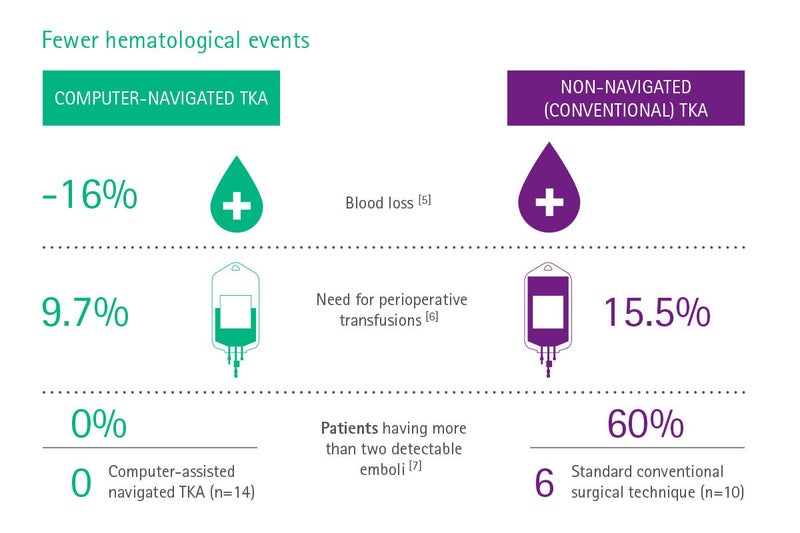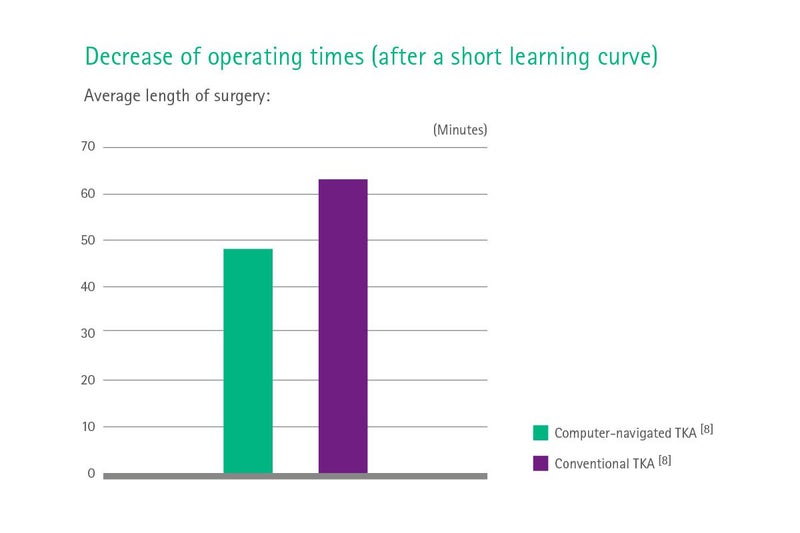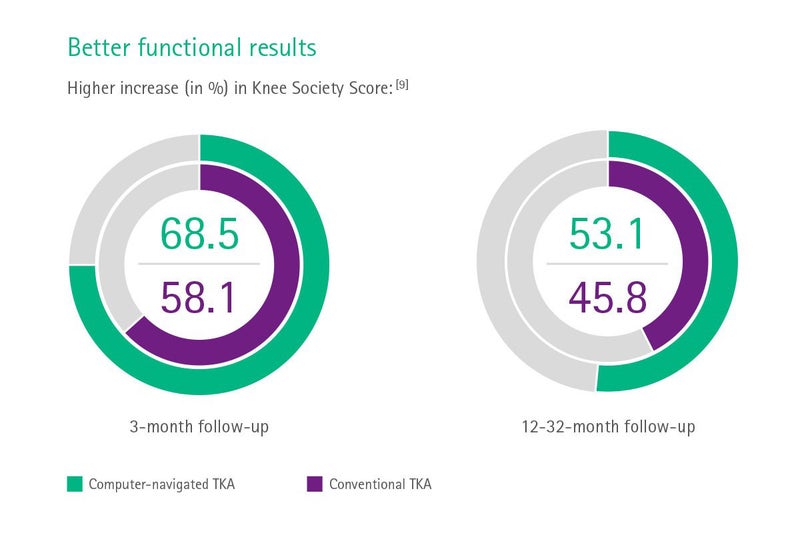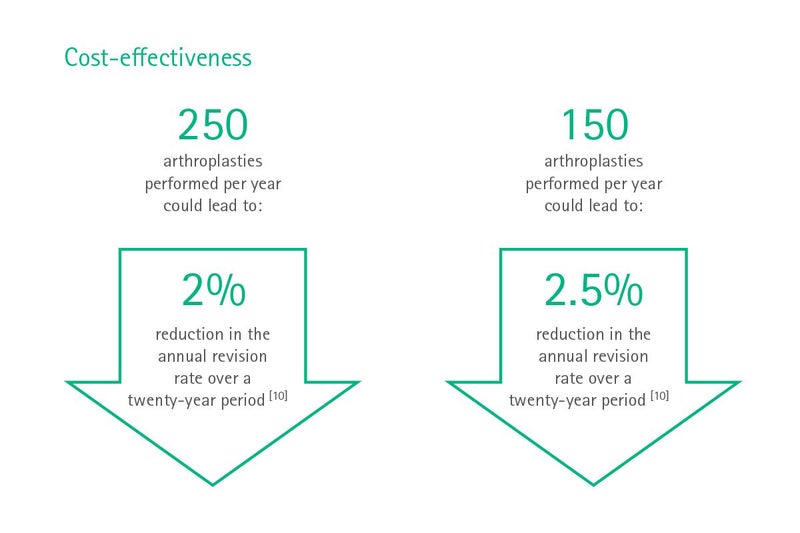Computer-navigated knee and hip arthroplasty: clinical and economic implications
Two factors explain why endoprosthetic knee and hip surgery is on the rise worldwide. One is demography: In 2017, the part of the global population that is aged 60 or over was twice as large as in 1980, report the United Nations. The number of older persons is expected to double again by 2050, when it is projected to reach nearly 2.1 billion people. [1] The second factor is the improved diagnostics in this field, such as the recent development of a number of 3D imaging modalities that provide orthopaedic specialists with better information. Total knee or hip arthroplasty (TKA, THA) will therefore continue to play an ever more important part in the surgical planning of hospitals.
For these interventions, computer-navigated surgery has recently shown to have a number of advantages compared to the conventional approach, as the present paper will lay out. For instance, computer navigation allows a more precise placement of the joint replacement, which in turn is associated with a number of clinical and economic benefits. These include fewer revisions and dislocations and a reduced rate of hematological complications.
Register now to read more about navigation general benefits
Fields marked with an asterisk are required.
[1] https://www.un.org/en/development/desa/population/publications/pdf/ageing/WPA2017_Highlights.pdf
[2] Bejek Z, SóIyom L, Szendrői M. Experiences with computer navigated total knee arthroplasty. lnt Orthop. 2007 Oct;31(5):617-22.
[3] De Steiger RN, Liu YL, Graves SE. Computer navigation for total knee arthroplasty reduces revision rate for patients less than sixty-five years of age. J Bone Joint Surg Am. 2015 Apr 15;97(8):635-42.
[4] Baumbach JA, Willburger R, Haaker R, Dittrich M, Kohler S. 10-Year Survival of Navigated Versus Conventional TKAs: A Retrospective Study. Orthopaedics. 2016 May;39(3 Suppl):S72-6.
[5] McConnell J, Dillon J, Kinninmonth A, Sarungi M, Picard F. Blood loss following total knee replacement is reduced when using computer-assisted versus standard methods. Acta Orthop Belg. 2012 Feb;78(1):75-9.
[6] Liodakis E, Antoniou J, Zukor DJ, Huk OL, Epure LM, Bergeron SG. Navigated vs Conventional Total Knee Arthroplasty: Is There a Difference in the Rate of Respiratory Complications and Transfusions? J Arthroplasty. 2016 Oct;31(10):2273-7.
[7] Kalairajah Y, Cossey AJ, Verrall GM, Ludbrook G, Spriggins AJ.. Are systemic emboli reduced in computer-assisted knee surgery: A prospective, randomised, clinical trial. J Bone Joint Surg Br. 2006;88(2):198-202.
[8] Walde TA, Burgdorf D, Walde HJ. Process optimization in navigated total knee arthroplasty. Orthopaedics 2005 Oct;28(10 Suppl):s1255-8.
[9] Rebal BA, Babatunde OM, Lee JH, Geller JA, Patrick DA Jr, Macaulay W. Imageless computer navigation in total knee arthroplasty provides superior short term functional outcomes: a meta-analysis. J Arthroplasty. 2014 May;29(5):938-44.
[10] Slover JD, Tosteson AN, Bozic KJ, Rubash HE, Malchau H. Impact of hospital volume on the economic value of computer navigation for total knee replacement. J Bone Joint Surg Am. 2008 Jul;90(7):1492-500.








